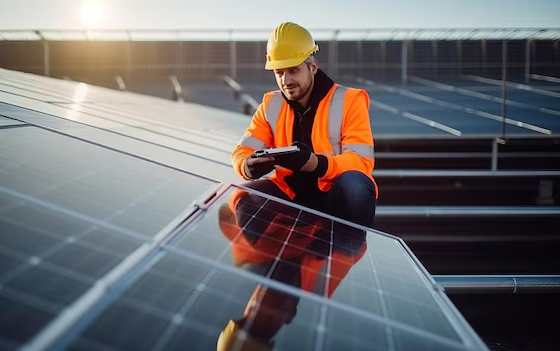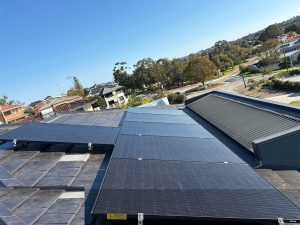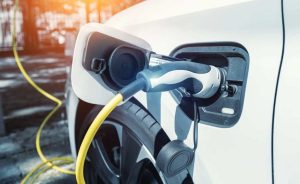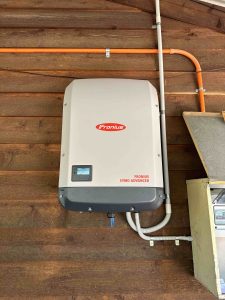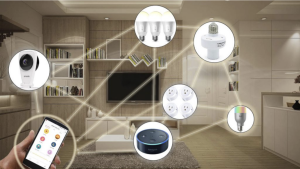Installing solar panels on your home is a great investment in sustainability and energy independence. However, like any other investment, maintaining it properly is crucial to getting the most out of your system. Regular maintenance ensures that your solar panels stay in top-notch condition, allowing them to produce optimal energy and last longer.
In this blog, we’ll cover some essential DIY solar panel maintenance tips to help you keep your system working efficiently. From understanding the basics of solar panel functionality to cleaning and inspecting your panels, here’s what you need to know.
Understanding the Basics: How Solar Panels Work and Why Maintenance is Important
Solar panels are an integral part of any solar energy system, converting sunlight into electricity through photovoltaic (PV) cells. As the sun shines on these panels, the energy from the light generates electricity, which can then be used to power your home. Over time, external factors like dirt, grime, bird droppings, and weather conditions can affect your panels’ ability to absorb sunlight, reducing their efficiency.
Although solar panels are designed to be durable and require minimal maintenance, periodic cleaning and inspection can help keep them running at their best. Proper maintenance can prevent minor issues from becoming bigger problems, ensuring that you maximize your investment in solar energy. Neglecting regular maintenance may lead to decreased energy production, costly repairs, or a shortened lifespan of your solar panels.
Why Maintenance is Key
- Efficiency: Clean and well-maintained panels absorb more sunlight, generating more electricity.
- Longevity: Regular care helps extend the life of your solar system.
- Cost Savings: Efficient panels reduce your dependence on grid electricity, saving you money over time.
Tools You’ll Need for DIY Solar Panel Cleaning and Inspection
One of the many benefits of solar panels is that they’re relatively low-maintenance. However, to keep your system running at peak efficiency, it’s essential to clean your panels from time to time and inspect them for potential issues. Here’s a list of tools you’ll need for your DIY solar panel maintenance:
Basic Tools for Cleaning
- Soft brush or sponge: Avoid using abrasive materials that could scratch or damage the panels. A soft-bristled brush or sponge will help you gently remove dirt and grime without causing damage.
- Garden hose with a spray nozzle: Use low-pressure water to rinse the panels. High-pressure washers can damage the panels or loosen connections, so a simple garden hose is ideal.
- Non-abrasive cleaning solution (optional): If your panels have stubborn dirt or grime, use a gentle, non-abrasive cleaning solution to help break it down. Avoid harsh chemicals that could degrade the panel’s surface.
- Microfiber cloth: After rinsing, use a microfiber cloth for spot drying to prevent water streaks or spots on the panels.
Tools for Inspection
- Ladder: Use a stable ladder to safely access your rooftop. Ensure the ladder is properly secured and stable to avoid accidents.
- Binoculars: For a visual inspection from the ground, binoculars can be handy for spotting debris, cracks, or other issues on your panels without climbing onto the roof.
- Multimeter: This tool helps measure the electrical output of your solar system. If you suspect your panels aren’t producing the expected power, a multimeter can help you check for any discrepancies.
Safety First
Before starting any maintenance, always prioritize safety. Make sure your ladder is stable, wear appropriate footwear with good grip, and consider using a harness if necessary. If you’re unsure or uncomfortable about working on your roof, it’s always best to call a professional.
Step-by-Step Guide to Cleaning Your Solar Panels Safely
Cleaning your solar panels is relatively straightforward, but it’s essential to do it safely and correctly to avoid damaging your system. Here’s a step-by-step guide to help you clean your solar panels effectively:
1. Turn Off the Solar System
Before you begin cleaning, ensure your solar system is powered down. This reduces the risk of electrical shocks and ensures you don’t interfere with the system’s operation while cleaning. Always follow the manufacturer’s instructions on how to safely turn off your solar panels.
2. Choose a Cool, Overcast Day
It’s best to clean your solar panels early in the morning, late in the afternoon, or on an overcast day. This helps avoid the risk of water evaporating too quickly and leaving streaks or spots on the panels. Additionally, cleaning during cooler hours ensures that the panels aren’t too hot, reducing the risk of damaging the glass surface.
3. Rinse with Water
Using a garden hose with a spray nozzle, gently rinse your solar panels with water to remove loose dirt, dust, and debris. Avoid using high-pressure washers, as they can damage the surface of the panels and the seals around the edges.
4. Scrub with a Soft Brush
After rinsing, use a soft brush or sponge to gently scrub away any remaining dirt, bird droppings, or grime. Make sure to use a soft-bristled brush to prevent scratching the surface of the panels. If needed, apply a non-abrasive cleaning solution to help remove stubborn grime, but be sure to rinse thoroughly afterward.
5. Rinse and Dry
Once you’ve scrubbed the panels, rinse them again with water to remove any cleaning residue. Allow the panels to air dry, but if you notice water spots forming, use a microfiber cloth to gently dry the surface. This will help prevent streaks and watermarks from reducing the efficiency of the panels.
Inspecting for Common Issues: Cracks, Debris, and Loose Connections
In addition to cleaning, inspecting your solar panels for common issues is a vital part of DIY maintenance. Regular inspections help you catch potential problems early and prevent more significant damage. Here are some things to look out for during your inspection:
1. Cracks or Chips in the Glass
Even though solar panels are made from durable materials, they can still develop cracks or chips over time due to hail, falling debris, or extreme weather conditions. Use binoculars or inspect the panels up close to check for visible damage. If you notice any cracks, it’s essential to get them repaired by a professional as soon as possible to prevent moisture from entering the panel and causing further damage.
2. Debris Buildup
While cleaning your panels, check for debris such as leaves, branches, or bird nests that may have accumulated around the edges or in the spaces between the panels. Debris can block sunlight and reduce the efficiency of your system, so it’s important to remove it regularly.
3. Loose Connections or Wiring
Inspect the wiring and electrical connections of your solar panels to ensure everything is secure and intact. Loose or exposed wires can pose a safety risk and affect the overall performance of your solar system. If you notice any issues with the wiring, it’s best to call a professional to address them.
When to Call a Professional: Knowing Your Limits in Solar Panel Maintenance
While DIY solar panel maintenance can go a long way in keeping your system in good shape, there are certain situations where it’s best to call in a professional. Some tasks require specialized knowledge and tools to ensure the safety and longevity of your solar system. Here are some instances when you should leave the job to the experts:
- Cracked or Damaged Panels: If your inspection reveals cracked or broken panels, contact a professional to repair or replace them.
- Electrical Faults: Any issues related to wiring or electrical components should be handled by a licensed solar technician to prevent safety hazards.
- Roof Damage: If you notice any damage to your roof or mounting system, it’s essential to call a roofer or solar expert to assess and fix the problem. Roof damage can affect the stability of your solar panels and lead to leaks or other structural issues.
Seasonal Maintenance Tips: Ensuring Optimal Solar Performance Year-Round
Different seasons bring different challenges for solar panel maintenance. Seasonal upkeep can help ensure that your solar system remains efficient and productive throughout the year. Here are a few seasonal tips to keep in mind:
Spring and Summer
In the spring and summer, pollen, bird droppings, and dust can accumulate on your panels, especially in areas with high humidity or near trees. Regular cleaning during these seasons will help keep your panels free from debris and maximize energy production.
Fall
In the fall, leaves can accumulate on your panels and obstruct sunlight. Be sure to clear any leaves or debris from around your panels. It’s also a good time to check for loose connections before the colder months set in.
Winter
In winter, snow can cover your panels and block sunlight. While snow typically melts quickly from solar panels due to their dark color and tilt, in colder regions, it may be necessary to remove snow using a soft brush. Be cautious, as working on a snowy roof can be dangerous. Additionally, check for any ice buildup that could impact your solar system.
By following these essential DIY maintenance tips, you can keep your solar system running efficiently year-round. Regular cleaning and inspection will ensure that your panels continue to produce optimal energy, helping you save on electricity costs and protect your investment for the long term. However, always remember to stay safe and know your limits—when in doubt, call a professional to handle any complex issues or repairs.


